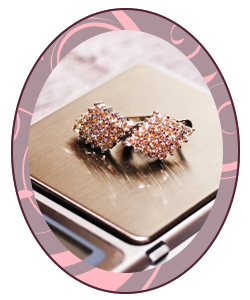INSPIRATION
How To Spot Fake Jewellery


How to Spot Fake Jewellery
Beautiful luxury jewellery is a pleasure to own. Whether you keep your jewellery as an item to simply be admired at home or wear it for special occasions, real luxury jewellery is coveted by many.
Unfortunately, the market for fake goods is booming, and it is all too easy to get caught up in a snare, purchasing a piece that is not worth the price you pay.
But how can you tell fake jewellery from the real deal, when the mock luxury items can be so convincing? We have collected some of the best ways to spot a fake - read on to find out more.
The cost

Have you found some incredible Cartier jewellery at a wonderful price? Well, hold your horses. If a piece of luxury jewellery seems much cheaper than the expected market value, then it is unlikely to be real.
When you begin shopping, do your research so that you are aware of the general price range of the brand and piece you are looking for. Generally, anything less than £300 will not be genuine, so shop carefully and remember that some things really are too good to be true!
Weigh it
This might sound silly, but the weight of jewellery can tell you a lot about its authenticity. You need not get the scales out, either. Simply feeling the weight of the piece in your hand can be revealing - gold is naturally heavy, whereas costume jewellery will only be gold-plated, with the metal beneath being lighter. If a piece of jewellery feels light in your hand, it is most likely fake.

Know your jeweller
Where are you looking to purchase your jewellery from? Any jeweller can claim to be selling jewellery from designers like Cartier, Van Cleef & Arpels, Bvlgari and so on, but this might not always be the case. Ask around to see whether anyone you know has purchased quality, genuine items from the jeweller in question, and look them up online. In all likelihood, you will be able to source reviews by real customers from independent sites. When doing this, it is important to look for red flags, such as the reviews having a similar tone of voice and being written in the same style. Finally, make sure to check for their Assay Assured certificate, as any reputable jeweller should hold this.
Hallmarks and branding
All real luxury jewellery should be hallmarked, which is used to guarantee the purity of whichever metal the jewellery is made of. This is generally used for all gold, palladium, silver, and platinum jewellery. However, you will need to be vigilant as fake hallmarks are not uncommon.

This is why it is also important to ensure that the branding of your piece is correct. If you are buying a high end, luxury piece of designer jewellery, compare the branding to other items you may own, or even pictures you have sourced. Look for fonts that don’t quite match, colours that are off, or other slight discrepancies such as misspellings and mismatched packaging, that you would not expect. An authentic piece will have uniform branding, and should also come with official documents of authenticity to solidify your certainty.
Imperfections are okay
This might sound counterintuitive, but if you are looking for real gemstones, you should expect natural imperfections. There will be flecks of discolouration or slim cracks within the gems that occur through their natural formation. However, if a jeweller is attempting to pass plastic or glass off as a genuine gemstone, you will be able to tell because these imperfections will not appear. The gem will have a smooth, perfect appearance, which is not at all accurate to how gemstones are. Don’t be afraid to view the gem under a magnifying glass to confirm the authenticity of the item.
The History of Diamonds
If you still aren’t sure, then check in with an expert. Someone who is experienced in the jewellery trade will have handled a lot of authentic and inauthentic pieces and will know exactly what to look for. Visit a reputable jeweller for a second opinion, and to set your mind at ease. They will be able to provide you with a solid answer as to whether you are holding a fake or a genuine article.


